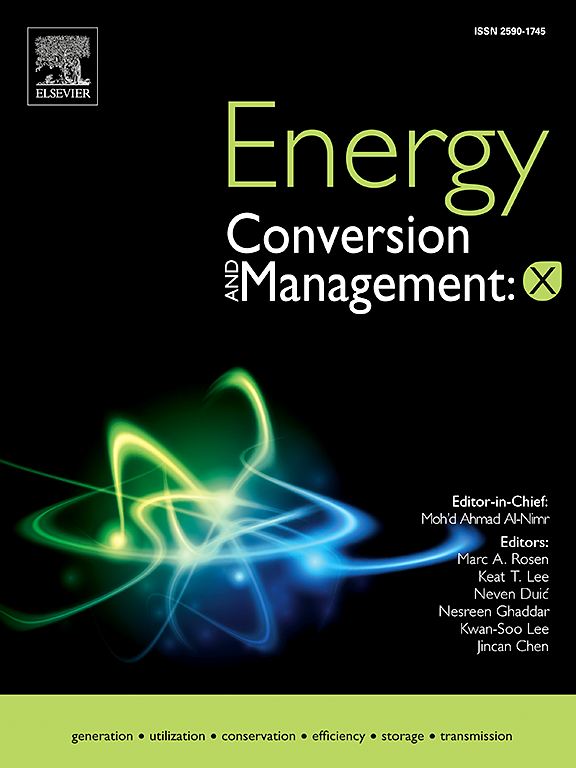Efficient energy management and temperature control of a high-tech greenhouse using an improved data-driven model predictive control
IF 7.1
Q1 ENERGY & FUELS
引用次数: 0
Abstract
Greenhouses in arid climates require advanced control systems to maintain the microclimate and reduce energy utilization, ensuring economic viability. To address these challenges, model predictive control is an effective method that forecasts the system’s future state and adjusts control variables accordingly. However, deterministic model predictive control does not account for system uncertainties, leading to performance degradation. Therefore, this study proposes an improved model predictive control framework that utilizes an artificial neural network developed from historical greenhouse data. This method uses a double layer approach, where the primary controller provides the nominal trajectory, and an ancillary controller adjusts for uncertainties. The double layer predictive control framework was assessed under varying conditions to evaluate the performance in terms of temperature control and energy utilization. Results illustrated that, despite system uncertainties, the double layer model predictive control framework outperformed the existing greenhouse climate system, deterministic and robust model predictive control approaches. It demonstrated mean absolute errors of 0.09 °C in winter and 0.10 °C in summer, with corresponding root mean squared errors of 0.19 °C and 0.36 °C, respectively. Moreover, the double layer model predictive control method reduced energy utilization by 20.01 % in winter and 13.34 % in summer compared to the existing control system over a 4 d simulation period.

求助全文
约1分钟内获得全文
求助全文
来源期刊

Energy Conversion and Management-X
Multiple-
CiteScore
8.80
自引率
3.20%
发文量
180
审稿时长
58 days
期刊介绍:
Energy Conversion and Management: X is the open access extension of the reputable journal Energy Conversion and Management, serving as a platform for interdisciplinary research on a wide array of critical energy subjects. The journal is dedicated to publishing original contributions and in-depth technical review articles that present groundbreaking research on topics spanning energy generation, utilization, conversion, storage, transmission, conservation, management, and sustainability.
The scope of Energy Conversion and Management: X encompasses various forms of energy, including mechanical, thermal, nuclear, chemical, electromagnetic, magnetic, and electric energy. It addresses all known energy resources, highlighting both conventional sources like fossil fuels and nuclear power, as well as renewable resources such as solar, biomass, hydro, wind, geothermal, and ocean energy.
 求助内容:
求助内容: 应助结果提醒方式:
应助结果提醒方式:


